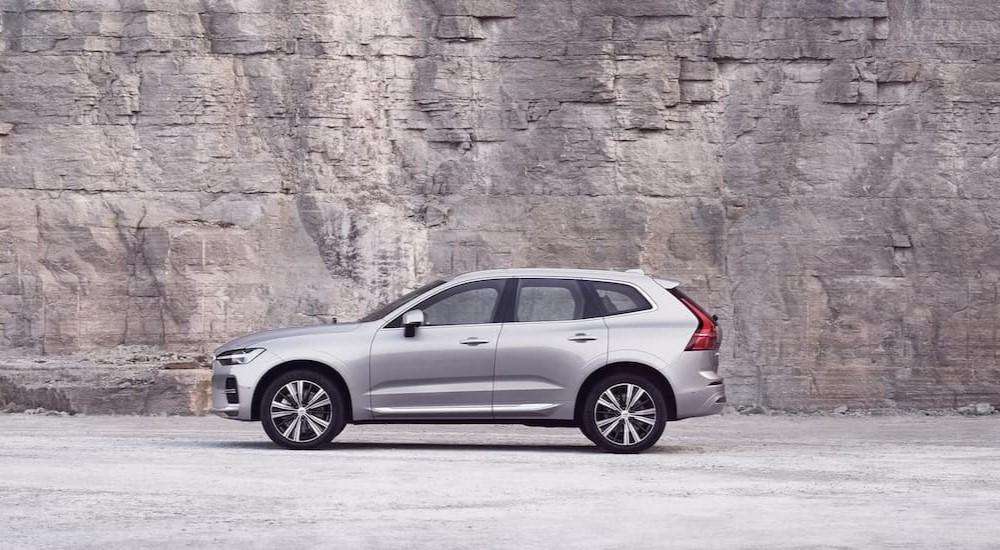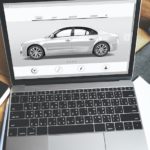You might say Dan has a problem, a car-buying problem. It seems like every time you see him; he’s in a different car. He’s owned six vehicles in the past four years alone and sometimes jokes that whenever he needs new tires, he just buys a new car instead. He also isn’t the type who just trades in for the latest model of whatever he is currently driving. Those last six cars included two pickup trucks, two crossovers, an overlanding SUV, and a track-prepped sports car, and they came from four different manufacturers. Four of those cars were bought new and two used, all from different dealerships in several different states. While we might not condone Dan’s habits, there are few drivers with as much experience buying and driving different vehicles, making him the perfect person to talk to when it comes to picking up tips on how to shop for your next car.
Tip #1: New and Used Both Have Their Place
Many car buyers stress out over the decision to buy new or shop used, with many swearing by one and never considering the other. Not Dan. He’s owned everything from brand-new vehicles right off the lot to genuine beaters that cost less than a monthly car payment. However, the funny thing is that he has had good and bad experiences with both. Possibly his all-time favorite vehicle was a used 1987 Jeep Wrangler that was his very first car. Dan was drawn to the Jeep because of his grandfather, who had served in World War II as a Jeep driver, and the open-air, off-road experience of the Wrangler represented freedom to him. Dan’s connection to that Wrangler was so strong that he owned that same vehicle three times, twice buying it back from the friend he sold it to.
However, his worst experience was also with a used vehicle––a Subaru Forester he picked up off lease from Patrick Subaru of Worcester with around 30,000 miles on the clock. That car went through two transmissions in four years, and its used status made getting it warrantied a headache. When the rear main seal blew at 60,259 miles, Dan had to fight Subaru tooth and nail to replace it because they claimed it was now out of the 60,000-mile warranty. Then the transmission grenaded 3,000 miles later, leading to a month-long battle to have it replaced, with Subaru demanding maintenance records from before Dan purchased the vehicle. When he sold the vehicle shortly afterward, the replacement transmission was already on its last legs, and he was tired of dealing with it.
That experience with the Subaru put him off used vehicles for a while, and his next four purchases were all brand-new models, starting with a 2017 Toyota Tacoma TRD Sport, which is not coincidentally known to be one of the most reliable vehicles around. However, he has purchased more used cars since. Lately, Dan has settled on the happy mean between new and used, and he’s currently driving a low-mileage Certified Pre-Owned 2021 Volvo XC60. In short, new and used models both have their place, and whether it’s a good or bad purchase depends more on the individual vehicle than its number of previous owners.
Tip #2: Do the Research and Buy the Car You Need
While Dan has bought a ton of cars over the years, just about every one of them has been carefully researched and purchased for specific reasons. He describes his process as “there’s a thought, there’s a period of obsessing, there’s a period of light shopping, there’s a period of refinement of obsessing, then there’s a period of aggressive shopping.”
In fact, he claims to have only bought a single car on the spur of the moment––a 2022 Mazda CX-5 Turbo Carbon Edition. However, even that wasn’t an entirely impulsive decision. When Dan sold his previous vehicle, he had been looking for a Volvo but simply couldn’t find one that was available during the COVID car shortage. However, Dan had previously had good experiences with Mazda and viewed the brand as “Japanese Volvo,” so the CX-5 was a clear choice that checked many of the boxes he was looking for, even if it wasn’t exactly what he had been planning on buying.
However, even that extensive research hasn’t always paid off. One of the best examples is a 2022 Toyota 4Runner TRD Pro that he owned for less than a year. Dan carefully researched this purchase because he wanted an adventure vehicle for the family after selling his Ram 1500 and camper. However, despite how much he enjoyed owning the 4Runner, he quickly realized that it simply didn’t fit his needs as well as he had imagined. He didn’t have as much time for overlanding as he wanted, and the 4Runner, with its soft suspension and underpowered engine, wasn’t all that practical for daily life. The reminder here is that no matter how well-researched a purchase is, that doesn’t guarantee that what you’re looking for is what you actually need.
Tip #3: Project Cars Aren’t What They’re Cracked Up to Be
That focus also applies to project cars. As a car enthusiast, Dan has bought his fair share of project cars over the years, and they have pretty much all been a letdown. The first was a rusted-out 1987 Camaro RS that he got when he was younger and “thought he had more money than he did.” That Camaro never got the V8 Dan intended to put in it, but it was not the last project car he bought. A Bronco II, a 1964 Chevelle (four-door, with an inline-six and three-speed automatic––not a cool one), and a BMW 3 Series suffered similar fates. More recently, Dan purchased a 2007 Mazda Miata that he put some real work into. However, this project car also became a cautionary tale.
The goal was to turn the Miata into a fun weekend car that could be taken to autocross events, and Dan put some serious upgrades into it, including an all-new suspension and a roll bar. However, he admits that he “quickly built a vehicle that wasn’t good at either of the things he set out to have.” By lowering the car and stiffening the suspension, it was no longer something he could take on leisurely drives with his wife or enjoyably commute to work in, and the mods were not particularly competitive in the autocross class he competed in. The lesson here? If you buy a project car, make sure you have the time, money, and skills to see the project through and a realistic vision of what you want out of it before you start.
Tip #4: Don’t Be Afraid to Play Hardball
One thing that stands out is how many incredible deals Dan has gotten on vehicles, including getting over $12,000 off a 2020 Ram 1500 priced at $56,000. That is because he isn’t afraid to play hardball with dealers and call them on their bullshit. The first time he tried to negotiate on a car (a 2001 Ford Ranger), he was yelled at by the salesman, and it left an impression on him. When he finally started buying newer cars from dealers again after several years of driving beaters, he was not going to put up with anything from them, and it paid off. He has spent hours negotiating over cars, going through multiple salespeople and managers before buying, and even threatening to walk out if the dealer wouldn’t give him a good deal.
The best example of this tenacity was when he was shopping for his Lime Rush 4Runner TRD Pro––already a rare model––during the height of the COVID markups. He started with a 750-mile search radius and flat-out refused to buy anything that wasn’t under MSRP. It took him over three months before he could find what he was looking for, and when it came time to buy, the dealer tried to tack on a $2,500 ceramic coating package that was “already on the car.” Dan refused, and three hours later, the dealer called him back, claiming to have “just gotten” an identical 4Runner that didn’t have the ceramic coating. Dan looked up the stock number and called the salesman out, eventually getting $500 off the MSRP. The lesson here? Draw your redlines, and don’t waver.
Also, don’t be afraid to shop around when selling your car. While you might not have a choice if you only have one vehicle, Dan managed to get much better deals selling his Ram 1500 and CX-5 to Vroom and then taking the money to the dealer rather than trading in his car. Today, there are many convenient ways to sell your car online, making it easier to explore options other than trading it in at the dealership. However, you can also sometimes leverage a valuable trade-in to get a better deal. In Dan’s case, he managed to get such an amazing deal on his Ram 1500 because he was trading in his Tacoma TRD Pro, which he knew the dealer wanted.
Tip #5: Buy an Ecosystem, Not a Car
The most important lesson that Dan has learned over his many car purchases is that you need to consider every aspect of the purchase. Don’t just focus on the car, but take into account the dealership, warranties, and everything else that you are getting. This approach was on full display with his latest purchase of a Volvo XC60. In fact, he says this is the first car where the car itself wasn’t the purpose but the support and service it came with.
Dan knew he wanted something practical and comfortable at a reasonable price, so he began his normal shopping process by focusing on a CPO luxury model. He started by comparing CPO program benefits and quickly gravitated towards Volvo over BMW because of the superior coverage. However, what really sealed the deal was what he found at his local Volvo dealership, Lovering Volvo. As we know, Dan isn’t a huge fan of dealers, but this one managed to win him over. The way he describes it, “the in-dealership experience is like what you read dealers saying their experience should be like.” In fact, the experience was so good that Dan didn’t even negotiate.
One of the important things that sold Dan on Lovering Volvo was the longevity of its staff. Dealers are usually a high-stress, high-turnover business, and salespeople don’t last long. Dan himself experienced this shopping for his Tacoma when the salesperson he was working with left mid-deal. And when he went back to the Mazda dealership two months after he purchased his CX-5, the salesman was already gone. If you’re looking to see if a dealership will live up to its promises, checking the longevity of its staff is probably a good place to start.
Car Buying Is an Adventure
For most of us, buying a new car is a rare event, and that can mean we approach the process apprehensively, unsure of what will come. It doesn’t help that there are a ton of myths and misconceptions surrounding buying and selling cars. Fortunately, there are people like Dan who we can learn from. His car shopping experiences have included everything from buying brand-new vehicles to having beaters given to him by friends, letting him know the pros and cons of all the options on the market. Now, you can benefit from that extensive experience and hopefully avoid some of the common mistakes of car buying without picking up his addiction to new cars in the process.




